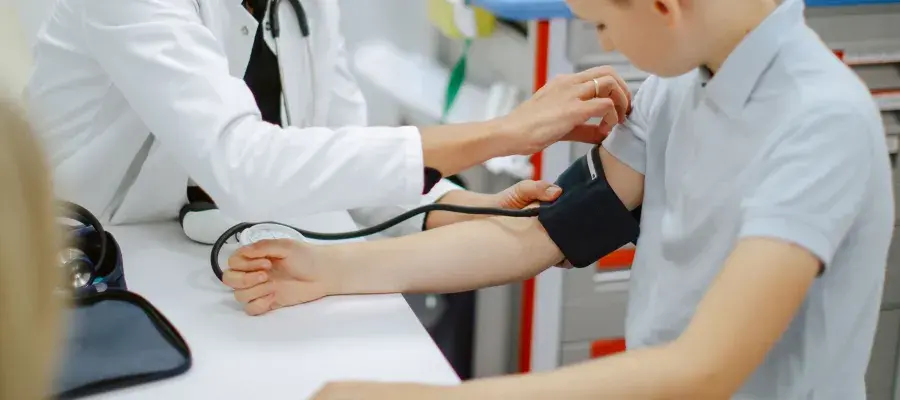
Recent research led by the University of Edinburgh and Zhejiang University has revealed a worrying trend: the proportion of children and teenagers living with high blood pressure has almost doubled over the past two decades. This article translates those findings into clear, actionable guidance for parents, school health professionals and community caregivers.
Understanding the Numbers: How the Epidemic Has Grown
The latest systematic review examined 96 studies covering more than 443,000 young people in 21 countries. It found that overweight and obesity—now affecting nearly twenty percent of children and teens—represent a major risk factor. The prevalence of hypertension in those under 19 rose from 3 % in 2000 to over 6 % in 2020, which translates to **114 million children worldwide**.
In addition to fully developed hypertension, **prehypertension**—a stage that signals an impending rise to the “high” range—has climbed to around eight percent, with rates as high as 12 % among teenagers. The data show the strongest spike in blood pressure during early adolescence, peaking around age 14, particularly in boys.
Why It Matters: The Long‑Term Risks of Early Hypertension
Childhood hypertension is not a benign condition. Studies show that early elevations in blood pressure track into adulthood and can increase the likelihood of:
- Heart disease
- Kidney dysfunction
- Stroke and other vascular complications
Because the brain and heart are developing during childhood, any damage that occurs now can have lasting effects. Early detection, combined with lifestyle interventions, can alter the trajectory before high blood pressure becomes a chronic problem.
Barriers to Diagnosis: The Masked Hypertension Problem
One surprising finding of the review was the discrepancy between office‑based measurements and home or ambulatory readings. When hypertension was confirmed by in‑office readings over three visits, prevalence was about 4 %; when researchers incorporated out‑of‑office monitoring, the figure jumped to nearly 7 %.
This discrepancy highlights the importance of a **multifaceted screening approach**:
- Confirmatory readings on at least three separate occasions
- Use of validated home blood pressure monitors for at least a week
- Consider ambulatory monitoring for children who show borderline results
Masked hypertension—where readings are normal during a clinic visit but elevated at home—remains a hidden threat that can delay diagnosis and treatment.
Action Plan for Parents: What You Can Do Right Now
1. Schedule a Blood Pressure Check
• Ask your pediatrician to include blood pressure screening as part of routine well‑child visits starting at age 3 and repeated every 3‑5 years.
• For children aged 12–15, annual screenings are recommended due to the steep rise during puberty.
2. Monitor at Home
A low‑cost, validated home monitor can provide a clearer picture. Keep a log of readings taken in the morning and evening over two weeks. Bring the log to your next visit.
3. Adopt a Heart‑Healthy Diet
- Increase intake of fruits, vegetables and whole grains
- Limit processed foods high in sodium and saturated fats
- Encourage water over sugary drinks
4. Promote Regular Physical Activity
Children should aim for at least 60 minutes of moderate to vigorous activity daily. Integrate sports, active play and family walks into daily schedules.
5. Reduce Screen Time and Stress
Set healthy boundaries on screen time and ensure adequate sleep—typically 9–11 hours for school‑aged kids—to help regulate blood‑pressure levels.
6. Discuss Family History
Even if a child is currently healthy, a family history of hypertension or cardiovascular disease warrants closer monitoring. Share this information with healthcare providers.
Action Plan for School Health Staff: Integrating Screening into the School Routine
Schools can play a pivotal role in early detection:
- Implement annual blood‑pressure screening during health‑check days.
- Provide staff training on proper cuff sizing for children.
- Develop a referral pathway to pediatricians for children with pre‑hypertensive or hypertensive readings.
- Include educational sessions on nutrition and physical activity for students and parents.
- Establish a policy to support children who need to monitor blood pressure at home (e.g., providing guidance on devices).
Community Resources: Where to Seek Help
When a child is found to have hypertension, the first step is to manage modifiable risk factors. If lifestyle measures are insufficient, a pediatric nephrologist or cardiologist can evaluate for medication. Participation in community programs such as “Kids First—Heart Health Workshops” can provide ongoing support.
Bottom Line: Prevention is a Team Effort
Childhood hypertension is a growing public health issue, but it is not inevitable. By combining routine screening, household monitoring, dietary changes, and regular activity, we can change the long‑term health trajectory for millions of young people.
— The University of Edinburgh carries out global research to better understand and address cardiovascular risk in youth.
Get Started Today: What’s the Next Step?
• Schedule a free health check for your child with our school health team.
• Download a guide to choosing a reliable home blood‑pressure monitor.
• Read more about the latest research on childhood hypertension.
• Explore the university’s heart‑health education resources.
• Contact our pediatric health specialists for personalized advice.

